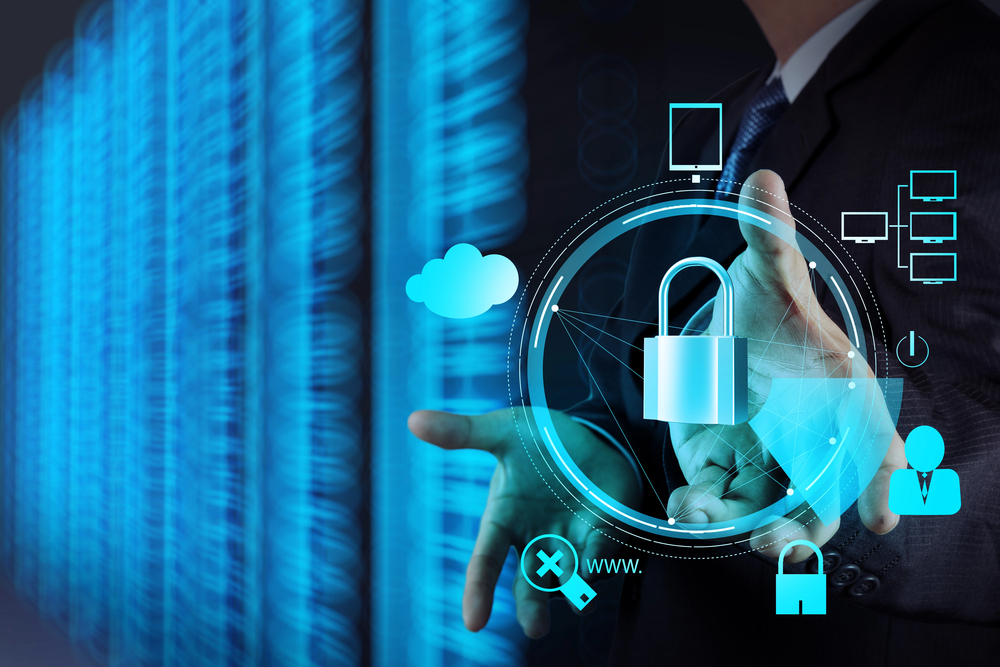
Have you ever experienced a major setback because your website or app crashed? Trying to diagnose the problem can cost you crucial minutes as unhappy consumers leave your website. You have 0.05 seconds to make an excellent first impression on a visitor. That’s correct; consumers create opinions about your website in the blink of an eye. That’s where a sluggish website results in a considerable loss in client conversion rates.
Even short disruptions can cause significant damage. The truth is that many companies struggle to recognize and address these difficulties.
Here’s the reality: speedier resolution times result in happy users. So, how can we reach this goal? Observability techniques are instrumental in this situation. Observability is the process of gathering information about systems. It examines data to determine the health and performance of systems.
This article explores user-centric observability and how it can help discover and handle user-impacting issues more quickly than before.
Understanding User-Centric Observability
Traditional observability measures system parameters such as CPU use and memory consumption. There is no questioning that these measurements are significant, but they do not provide a whole picture.
What happens if your system looks operational, but consumers still need a better experience? Here’s where user-centric observability comes in.
User-centric observability improves traditional observability. It accomplishes this by prioritizing the end-user experience in your monitoring approach. It focuses on gathering and analyzing data associated with user interactions, such as:
- User behavior: This includes how users browse your program, which features they utilize the most, and where they find friction spots.
- Page load times: This refers to how long it takes for certain pages or functions to load for users.
- Error messages: This describes the sorts of issues that users face and their frequency.
- API response times: The speed at which your application receives responses from external services.
Understanding how people interact with your system allows you to spot possible concerns. Address these issues to avoid user irritation and escalation of problems.
See also: Observability Key to Managing Complex Infrastructures
The Evolution of Log Monitoring
Log monitoring has a long history. Traditionally, It involves collecting and storing log data generated by various system components. These logs include:
- Server activity logs: Recording events like application starts, stops, and restarts.
- Application error logs: Detailing errors encountered by the application during operation.
- User action logs: Capturing user interactions within the application.
Previously, technicians would manually review the information to identify and rectify errors. Sifting through them to find relevant information would take time and effort. This is precisely the challenge presented by traditional log monitoring. Moreover, traditional log data does not follow a standard format, making it difficult to extract relevant insights.
These restrictions reduce the efficacy of traditional log monitoring in attaining user-centric observability. However, the picture is changing with the introduction of improved log monitoring technologies.
The transition to enhanced log monitoring techniques has prepared the way for user-centered observability. User-centric observability gets logs from several sources. Centralizing them in a single area enables the extraction of essential information. This removes the need for manual data entry, streamlining the analysis process.
Key Components of User-Centric Observability
Until now, we’ve observed the limitations of conventional log monitoring and the emergence of new solutions. Now, let’s look at the essential parts that make up the basis of user-centric observability:
1. Detailed Log Collection and Analysis
Effective user-centric observability is dependent on substantial log data collecting. This extends beyond server activity and application failures. You must collect user-centric data points that give insight into how users engage with your system. Here are some important things to focus on:
1. User Actions
Here, you track user interactions inside your application, including clicks, page visits, form submissions, and searches. This data shows user behavior trends and aids in identifying possible friction spots that may interfere with their experience.
2. API Requests & Responses
Next, monitor the performance of your application’s API requests to external services. Slow responses from external services can significantly influence the user experience.
3. Client-Side Errors
Finally, focus on capturing and analyzing user mistakes. This information can help uncover difficulties related to the user’s surroundings and identify issues in the application’s front-end code.
2. Real-Time Monitoring and Alerting
Sometimes, it takes days or even weeks to identify a serious issue that affects your users. Real-time monitoring enables you to discover problems before they worsen, helping to avoid widespread user dissatisfaction.
Here are some benefits of real-time insights:
- You can identify issues that affect consumers in real-time. Then, troubleshoot the issues to reduce downtime. Correcting detected faults also improves the user experience.
- It makes it easier to link user activity data with system metrics. This allows you to identify possible issues before they impair the user experience.
3. End-to-End Tracing and Correlation
Consider a user receiving an error notice while attempting to finish a purchase on your e-commerce website. Traditional monitoring points to a mistake during the checkout process. But what if the fundamental problem is a sluggish response from a payment processing service? This is where end-to-end tracing comes in.
End-to-end tracing allows you to visualize the user experience throughout your application ecosystem, including interactions with external services. It monitors each request as it passes through your system and pinpoints where delays or mistakes occur.
Here’s how end-to-end tracing and correlation can help:
- End-to-end tracing detects sections of your application or other services that cause delays, which in turn affect the user experience.
- Trace data can be compared to user behavior data. Understanding the context of user behaviors allows you to discover the problem’s cause.
4. User Behavior Analytics
Understanding user behavior is critical to creating excellent digital experiences. User behavior analytics gathers information on how users engage with an application. The data is then evaluated to understand the system better. This data may include:
- Clickstream data records the order in which a user navigates across your application’s pages or features.
- Heat maps help visualize the sections of your application that attract the most significant user interest.
- Session records capture user interactions inside your program. Furthermore, it gives you an inside view of how consumers interact with your interface.
User behavior data indicate portions of your program that are unclear or difficult for users to traverse. Here’s how to use user behavior analytics:
First, look at how people traverse your program. Use the information gathered to simplify procedures and improve the user experience. Then, use user behavior data to personalize the content. Personalize the user experience by making recommendations based on individual interests.
Implementing User-Centric Observability
After examining the key components of user-centric observability, we will discuss the practical aspects of implementation. Here’s a roadmap to guide you on your journey towards user-centric observability:
1. Define User Experience Goals
Start by outlining your user experience (UX) goals. What specific aspects of the user journey do you want to improve? Identifying clear objectives will help you tailor your observability strategy for maximum impact.
2. Identify User Data Sources
Map out the various sources of user data within your system. This may include server logs, application logs, user behavior analytics tools, and session recording platforms.
3. Implement Centralized Log Collection
Establish a central repository for log data from all relevant sources. This will streamline analysis and ensure a holistic view of user interactions.
4. Leverage Automation and Machine Learning
Utilize automated tools for log collection, parsing, and analysis. Integrate machine learning to identify patterns and anomalies. This information can help indicate potential user experience issues.
5. Integrate Tracing and User Behavior Data
Combine end-to-end tracing data with user behavior analytics to gain a comprehensive understanding of the user journey and pinpoint the root cause of problems.
6. Establish Alerting and Notification Mechanisms
Set up real-time alerts to notify you of potential issues impacting user experience. This allows for proactive troubleshooting and minimizes downtime.
Best Practices for User-Centric Observability
Here are some essential recommended practices to consider while adopting user-centric observability:
- Prioritize metrics directly related to user experience, such as page load time, error rates, and API response times.
- To provide trustworthy insights, ensure your user data is accurate and total.
- Use dashboards and visuals to convey user experience data to stakeholders effectively.
- Encourage collaboration among the development, operations, and product teams. Use user-centric observability for ongoing improvement.
Benefits of User-Centric Observability
Adding user behavior analytics into your observability plan gives you a better knowledge of your users. With this, you can make data-driven decisions to improve their experience.
Here are some of the main advantages you may anticipate to get:
1. Smoother User Experience
A comprehensive awareness of user journeys allows you to identify possible friction areas. Addressing these issues will result in a more seamless and delightful experience for your users.
2. Faster Issue Resolution
Real-time monitoring allows you to discover user-impacting issues. Alerting mechanisms tell you as soon as these difficulties occur, allowing you to troubleshoot. This helps reduce downtime and guarantees that problems are resolved before they cause major interruptions.
3. Enhanced Performance
User-centric observability gives valuable information about system performance from the user’s perspective. It can identify bottlenecks and opportunities for improvement, resulting in a more dependable and efficient system.
4. Strategic Alignment
By concentrating on user experience measurements, you may achieve your business objectives. Metrics like conversion rates and customer turnover directly influence corporate goals.
User-centric observability allows you to make data-driven judgments. These decisions help to achieve corporate objectives and KPIs.
Challenges and Solutions
While user-centric observability offers significant advantages, there are challenges to consider when implementing it:
1. Data Silos and Fragmentation
User data is frequently spread among several discrete systems, making it difficult to obtain a comprehensive perspective. It is advisable to use a centralized log management platform. It allows you to collect and combine data from all relevant sources through the platform.
2. Complexity of Modern Applications
Modern programs are complicated, with microservices and cloud deployments. This complexity makes it challenging to trace user trips throughout the ecosystem. To address this issue, employ end-to-end tracing tools to trace user activities.
3. Skilled Personnel
Extracting useful information from massive volumes of user data necessitates expertise. In this procedure, skilled professionals are required for log analysis and data visualization. Invest in training your current teams. Consider employing people with experience with user-centric observability.
4. Cultural Shift
Moving beyond typical monitoring measures is essential. However, this demands a culture transformation inside your business.
Encourage collaboration among the development, operations, and product teams. Educate stakeholders on the value of user experience. Explain how user-centric observability can help the company.
Future Trends in Observability
The future of observability is bright. Advancements in artificial intelligence (AI) and machine learning play an increasingly significant role.
- Machine learning algorithms will continue to improve in identifying patterns and anomalies in user behavior data. This capability will enable you to address potential issues proactively before they negatively impact users.
- AI can be used to predict user behavior and potential issues. This allows you to take preventive measures and ensure a seamless user experience.
- Machine learning can automate the process of troubleshooting user experience issues. This streamlines resolution times and minimizes user downtime.
Prioritizing User-Centric Observability for Success
We have seen that user experience is the most important aspect to maintain. User-centric observability helps you to gather data on how users interact with your applications. Additionally, it also identifies potential issues impacting their experience and takes proactive steps for improvement.
By implementing the strategies outlined in this blog post, you can elevate your user experience to new heights. This will help you to form user loyalty and drive sales.
It’s time to embrace user-centric observability and start delivering exceptional digital experiences for your users. The tools and techniques are readily available – the only thing missing is your commitment to prioritizing user experience.
Keval Bhogayata is a passionate and versatile professional with expertise in Information & Communications Technology. He is a Senior Software Developer at Middleware, over the course of his 4-year career; he has excelled in various roles, including Developer, DevOps Engineer, and Tech content writer. His areas of expertise include OpenTelemetry and Observability. He has recently started his Youtube channel @DevBTS, dedicated to learnings from people in the Software Engineering field.

Keval Bhogayata is a passionate and versatile professional with expertise in Information & Communications Technology. He is a Senior Software Developer at Middleware, over the course of his 4-year career; he has excelled in various roles, including Developer, DevOps Engineer, and Tech content writer. His areas of expertise include OpenTelemetry and Observability. He has recently started his Youtube channel @DevBTS, dedicated to learnings from people in the Software Engineering field.



